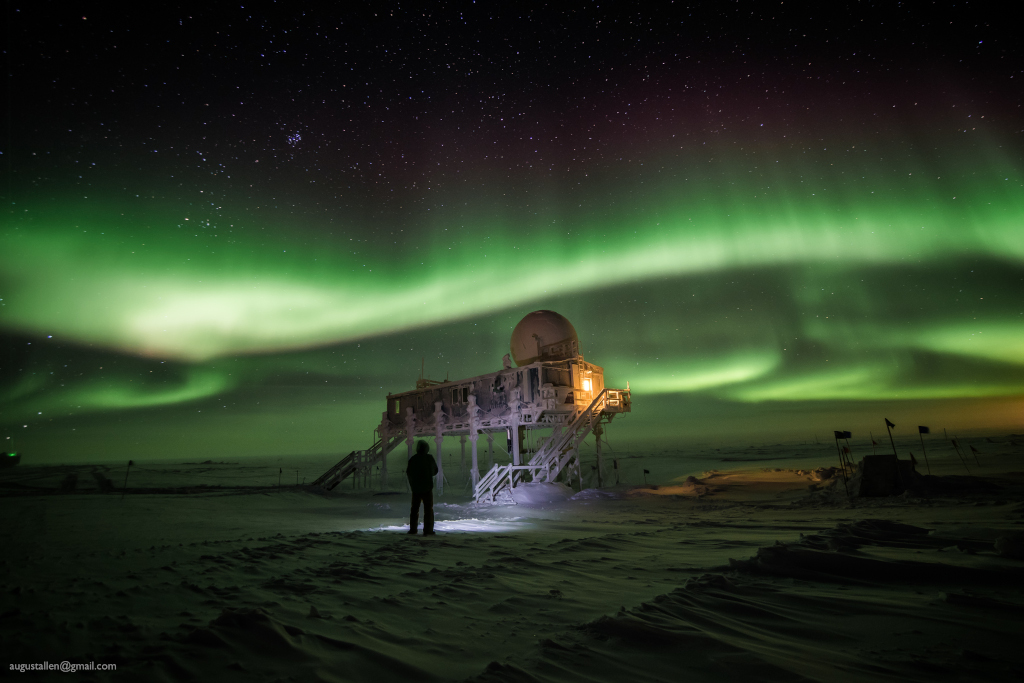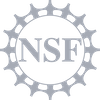Additional information on Summit Station can be found in the Summit Station Guide or by contacting the Summit Station Science PM.
Summit Station is one of the more unique research stations in the Arctic as its located at both high altitude and inland near the summit of the Greenland Ice Sheet. Established in 1989 as the site of the Greenland Ice Sheet Project 2 (GISP2) borehole, the resulting climate record has become the centerpiece for many research projects ranging from meteorology, glaciology, atmospheric chemistry, and astrophysics. The GISP2 team reached bedrock on July 1, 1993, recovering a total of 3,053 meters (10,016 feet) of ice core, the world’s longest sample at the time. This ice-core ushered in a new era of paleoenvironmental investigation, providing the best record of environmental change than any ice core previously collected.
Following the GISP2 project, Summit was maintained as a research station. The initial focus was on post-depositional properties of trace gases and aerosols in firn, the ~80 meters (262 feet) of snow on top of the ice that is gradually compacted into ice over time. Summit Station now supports a wide range of research on a year-round basis, including meteorology, glaciology, atmospheric chemistry, and astrophysics. The station serves as a base for long-term environmental observations.
The station consists of three primary operational structures, with temporary shelters erected seasonally. The permanent operational facilities include the Big House, the camps primary building, with kitchen, dining area, and office spaces, and which houses a complete bathroom and laundry facility; the Summit Mobile Garage (SMG), which houses the station power source and is used for maintenance of rolling stock; and a berthing module.
Summit Station includes two stand-alone facilities dedicated to science support: one elevated structure on the margin of the clean air/snow zone (Atmospheric Watch Observatory or AWO) and one mobile unit mounted on skis (Mobile Science Facility or MSF) to the north of the clean air zone. Other auxiliary infrastructure includes science towers, multi-use facilities supporting other science experiments and station operations, and structures utilized for campaign science. Year-round science focuses on clean air sampling, snow accumulation and property measurements, and maintaining cloud and atmospheric studies.
An active campaign science community works at Summit during the summer. Many campaigns target Summit because of its clean air and snow, and to enhance interpretation of the deep-ice-core record. Recent interest from the astrophysical research community is being seen supported with small projects aimed at determining the value of the site for cosmic viewing. During the summer, which runs mid-April to mid-August, campaign science groups and related activities can swell the population to a peak of 50; during the winter, a core staff of four to five maintain Summit’s experiments and facilities.
The Battelle ARO team enhances science support at Summit Station by;
- Conducting orientation/training for incoming staff researchers, including altitude safety, clean-air policy, safe-travel policy, code of conduct and harassment, etc.
- Supporting research via science technician support, manual labor, travel monitoring, etc.
- Allocating gear and providing training for researchers and staff, including camping equipment, communication gear, safety equipment snowmobiles, generators, etc.
- Constructing and maintaining the skiway so Summit Station can receive LC-130 ANG flights
- Supporting ANG operations, including weather observations, cargo on/offload support, and fuel on/offload.
- Supporting other aircraft support as required such as Twin Otter charters for campaign science.
- Providing internet access and bandwidth management.
- Providing construction support, including heavy equipment operation, resource allocation, and manual labor.
- Meal provisioning facilitated by a seasonal chef.
- Processing retro/waste/recycle for flights back to Kangerlussuaq.
- Supporting medical facilities via University of Colorado Denver staffing in summer months.
Though the functions detailed above are essential to the backbone of Summit operations, the centerpiece of the support services offered at Summit are Battelle AROs ability to operate science instrumentation and process samples on behalf of funded researchers. Through the staffing of science technicians, Battelle ARO can monitor and service science equipment, sample air and snow, reporting on project status, perform periodic calibrations, and support diagnostics and repairs so that PIs and researchers do not need to maintain a constant presence at the station.
Summit’s unique placement at a remote high altitude and latitude location is the reason it is a targeted hub for atmospheric science. Thus the NSF has established sectors to preserve clean air and snow for research purposes. The Battelle ARO team recognizes the importance of accurate scientific data, as well as future science and thus rigorously maintains a Clean Air Management Plan (link to clean air management plan PDF) that outlines a pedestrian culture, restriction of internal combustion equipment during time of north/low winds (except for life safety or N Wind variance approvals), detailed logging of N Wind operations and emissions tracking, and strict access guiding entry into these science sectors.
A Science Coordination Office (SCO) serves as an NSF funded group that further advises the Battelle ARO team on efficient use of resources at Summit to ensure that science projects and operational/construction projects do not conflict and negatively impact scientific data collection. The SCO is a valuable resource for the preservation of science at Summit and and more information on the stations history, mission, and future can be found at their website.





